 Hickory Hills July 14, 2010
Hickory Hills July 14, 2010
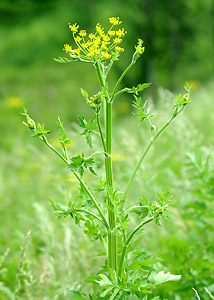
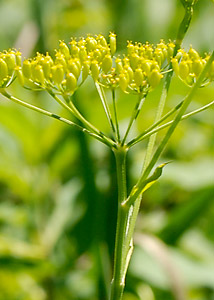
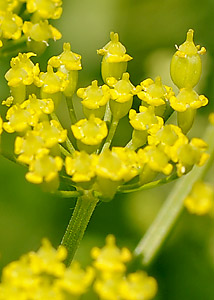

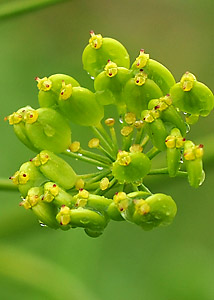
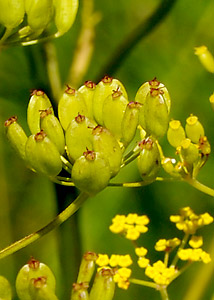
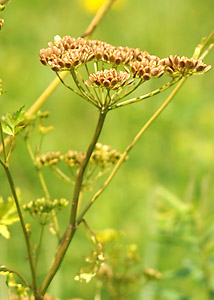

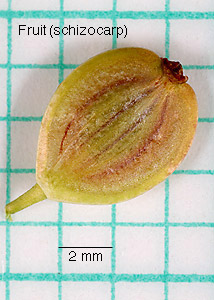
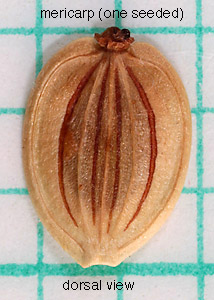
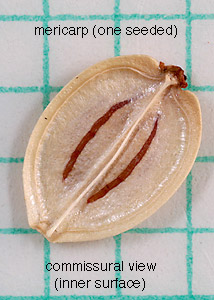
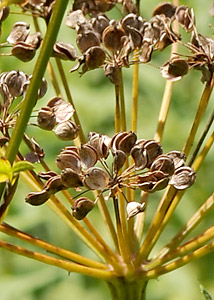
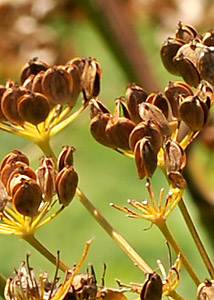
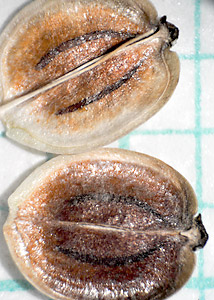
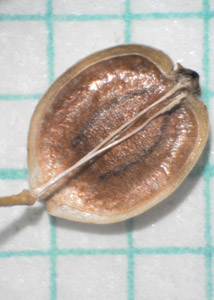
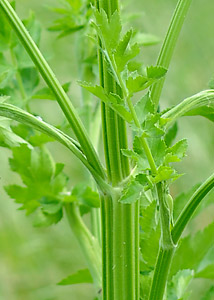
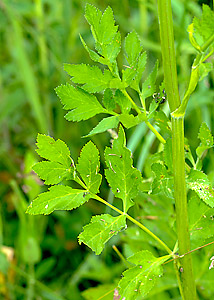

| Classification Hierarchy | |
| Kingdom | Plantae |
| Subkingdom | Tracheophyta |
| Superdivision | Spermatophyta |
| Division | Magnoliophyta |
| Class | Magnoliopsida |
| Subclass | Rosidae |
| Order | Apiales |
| Family | Apiaceae |
| Genus | Pastinaca |
| Species | Pastinaca sativa |
 Hickory Hills July 14, 2010
Hickory Hills July 14, 2010
Scientific Name: Pastinaca sativa
Common Name: Wild Parsnip
Origin: alien (Europe/Asia)
Notes:The Iowa DNR lists wild parsnip as an invasive plant species. Large colonies of this yellow flowered plant can be seen along roadsides and in sunny open fields. Wear long sleeves and long pants when you work around this plant because it can cause very painful blistering (called phytophotodermatitis) which means that toxic plant substances (probably a furocoumarin e.g. sphondin) on the skin, when exposed to the sun, cause blistering which looks and feels like a burn.
Additional references: 1, 2, 3, 4, 5, 6, 7, 8, 9, 10.
Flowers: small yellow 5-petaled bloom late May, inflorescence is a compound umbel. Fruit; schizocarp, turns brown in late summer.
Leaves: compound pinnate, leaflets sometimes incised, margins toothed.
Stems: thick, ribbed.
Glossary: Botanical Terms pdf


















Comments: Pastinaca sativa (wild parsnip) is an invasive alien species that originated in Europe. It multiplies quickly in disturbed areas along roadsides and untended fields. It can be confused with Zizia aurea (golden alexanders) which is a desirable native prairie plant. Both plants produce small yellow flowered compound umbels but the leaves and the fruits differ sufficiently to make a distinction between the two species.